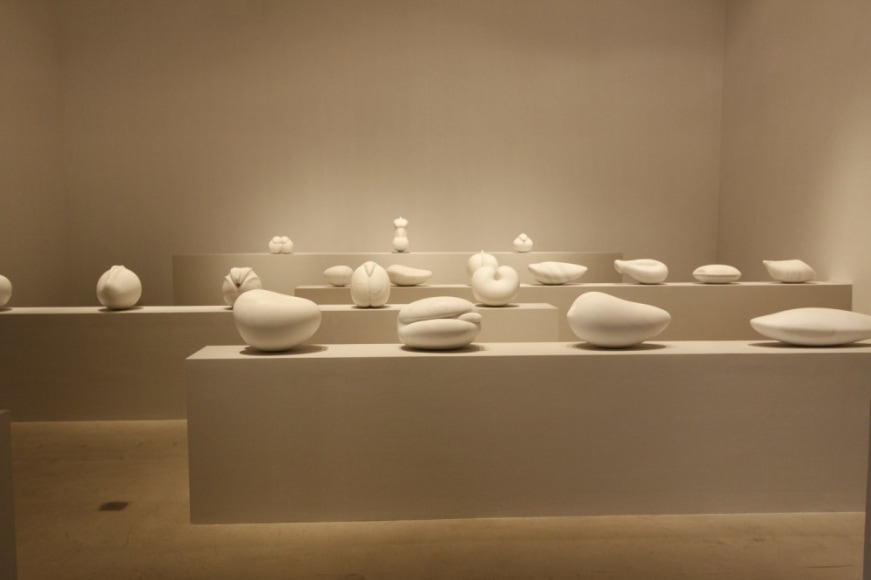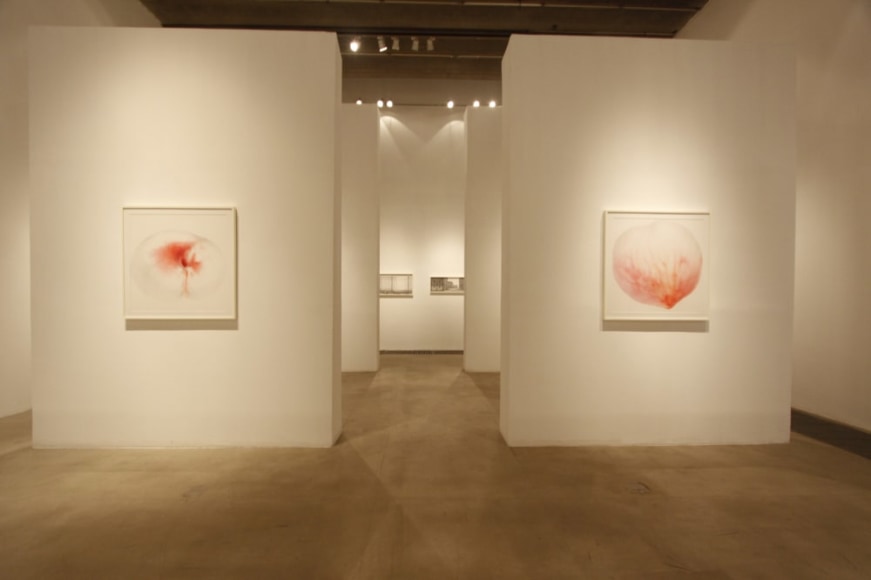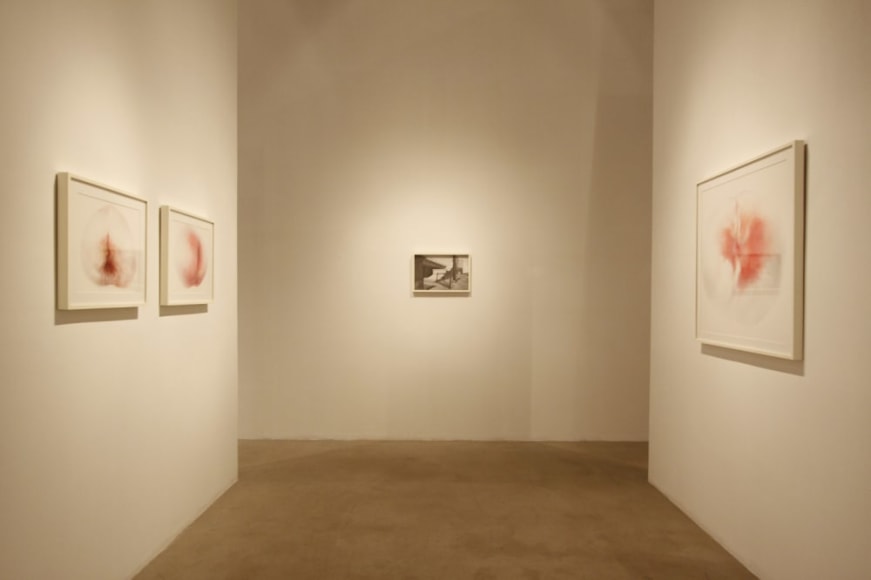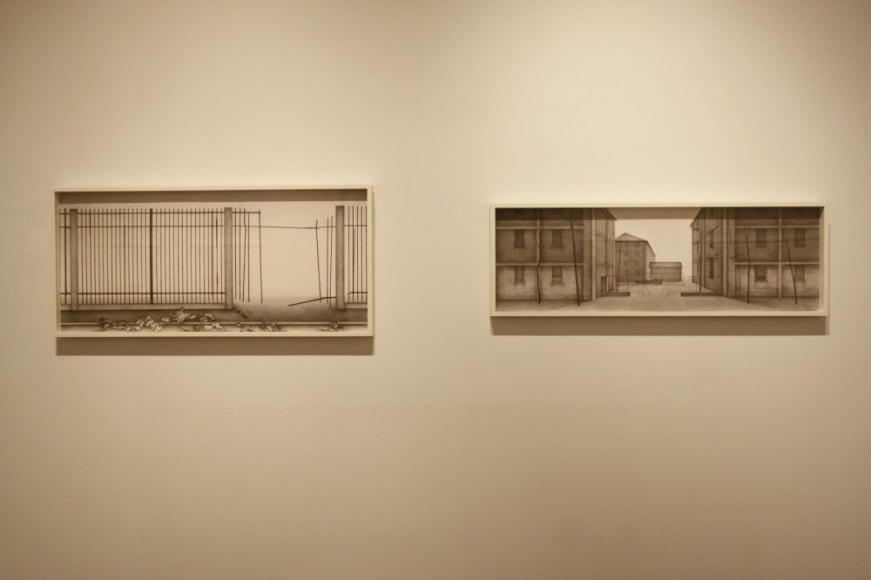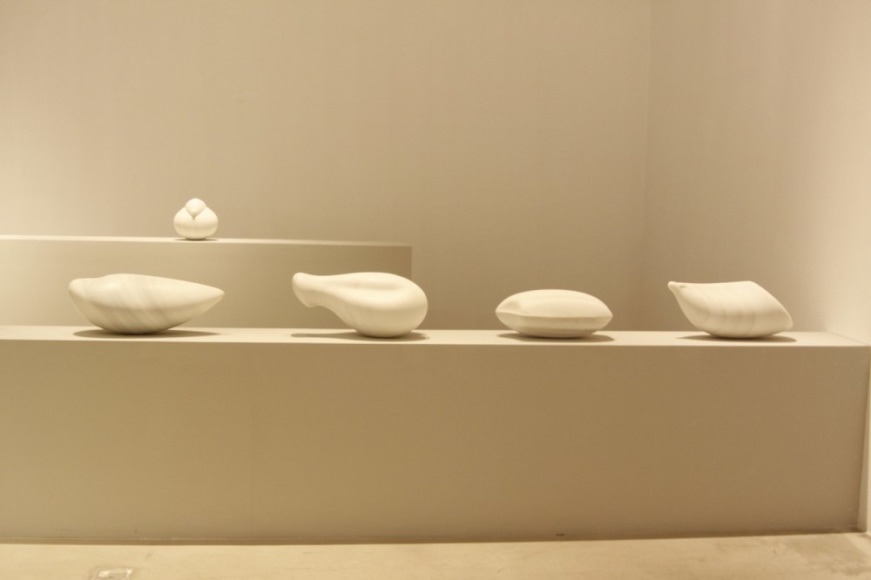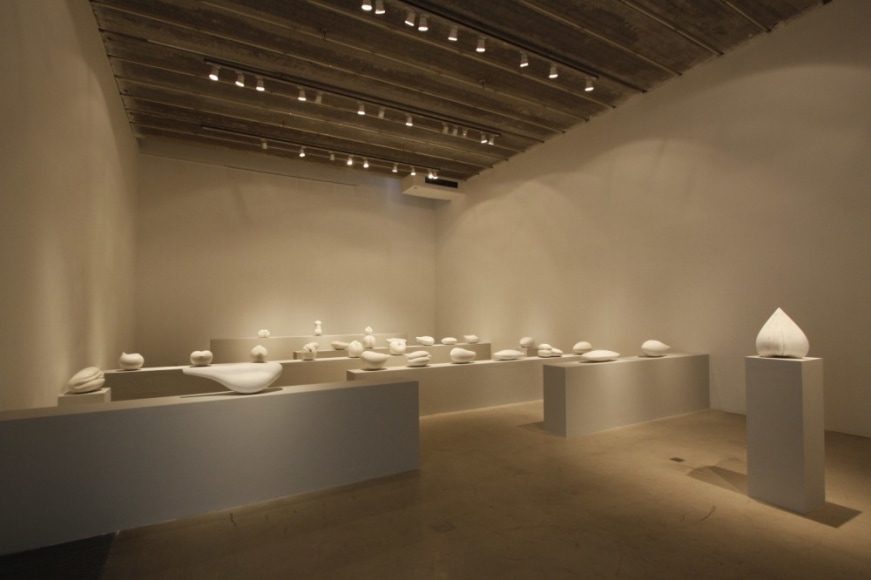Chambers Fine Art is pleased to announce the opening on April 20, 2013 of Zhang Dun and Song Hongquan: Units. This exhibition takes the form of a dialog between drawing and sculpture, Zhang Dun’s delicate pencil drawings contrasting with the sensuous white marble sculptures of Song Hongquan. The two artists come from widely different backgrounds, Zhang Dun having grown up in the industrial environment of Shenyang and Song Hongquan in a village in Hebei, and this is clearly visible in their work. Zhang’s desolate urban landscapes, pencil drawings of remarkable refinement, contrast with the biomorphic forms of Song’s sculptures which seem at first glance to be a continuation of a tradition pioneered nearly a century ago by Jean Arp and Henry Moore.
Zhang Dun’s “units” (danwei) refer to the abandoned or neglected buildings that have been the primary theme of her oeuvre since her first exhibition at Chambers Fine Art A Difference of Opinion in 2011. Her large pencil drawings, occasionally heightened with touches of color, are noteworthy for the way in which she transforms industrial buildings of the type that can be found throughout China into haunting evocations of a world that no longer exists. From the 1990s onwards it was the destruction of the traditional architecture of Beijing that inspired many artists to document its demise. Now, in the hands of Zhang Dun, it is the massive industrial architecture of the 1950s and 1960s that occasions these elegiac reflections on this utilitarian architecture that is currently undergoing the same fate as the hutongs.
In a new series of drawings of peaches, however, executed in colored pencil, Zhang reveals sensitivity to the forms of the natural world that had hitherto not appeared in her oeuvre. Traditionally regarded as a symbol of longevity and health in China, the peach assumes monumental form in Zhang Dun’s drawings and is the sole focus of attention. The luscious peaches are simultaneously strangely disembodied and frankly erotic.
Song Hongquan’s “units” refer to the seeds, a plant’s unit of reproduction that he uses as inspiration for his sculpture. While Zhang Dun creates her visionary fruit from networks of faint pencil lines Song Hongquan discovers his unitary forms inside blocks of marble by removing everything that is not what he is looking for. The son of a noted carver, Song used the tools of a carver as the theme of his first major body of work, After the Stone Age (2011), now in the White Rabbit Collection, Sydney. Working on the land while he was still a child, Song also grew to understand the mysterious process by which a mature plant grows from a tiny seed. Although faithful to the particularities of the seeds he uses as his inspiration, the enlarged, streamlined forms that result once the sanding and polishing process is completed hover disturbingly between the botanical and the human.
北京前波画廊荣幸地宣布将于2013年4月20日起举办张盾和宋红权的双个展《单位》。此次展览以素描和雕塑之间的对话形式展现,张盾细腻的铅笔画与宋红权抽象且性感的汉白玉雕塑形成了对比。张盾在工业城市沈阳长大,而宋红权则出自河北的农村,他们的作品悄然体现出这两位艺术家截然不同的生活背景。张所描绘的城市景观荒芜凄凉,其素描技能至臻完美。而宋的雕塑则展现了生物形态,似乎延续了近百年前让•阿尔普和亨利•摩尔的创作传统。于是,两位艺术家的作品形成了鲜明对比。
张盾此次展出的“单位”是指那些废弃的厂房或是被遗忘了的建筑,那也是她于2011年在纽约前波画廊举行首次展览《求同异存》时的主题。这些铅笔画尺寸相对较大,偶尔用隐约的色彩来画龙点睛。被空置了的工业建筑在北方随处可见,然而这些作品的独特之处便在于艺术家将观者引领到一个早已不存在、却又令人难以忘怀的时代。自上世纪90年代起,北京开始大规模拆除传统建筑,激起了许多艺术家的灵感,并通过艺术创作记录了这一变迁。而张盾手中的铅笔却哀婉地描绘了建于上世纪五、六十年代的大型工业厂房,它们现在也和胡同一样有着相似的遭遇。
与此同时,张盾在一组新的彩色铅笔素描作品中,展示了她以往艺术创作中不曾出现的对自然界的精湛描绘。桃子在中国传统文化中是长寿和健康的象征,在张盾的素描里每个桃子独立成为了主题。被放大了几倍后,它们似乎遗失了本体,不再像桃子,而是非常坦然地流露出一丝妩媚。
宋红权作为一个石雕匠之子,将石雕工具作为主题,创作出其第一组重要作品,即现被悉尼白兔美术馆收藏的2011年作品《后石器时代》。而本次展览的“单位” 作品指的是种子,或者说是一个植物繁殖系统的单位。他通过去除汉白玉中他不想要的部分而寻找到了这些单位造型。虽然这些雕塑呈现了有机形态的造型,却不能让人直接联想到任何真实世界里的东西。这样的三维表现方式和当今典型的组装式雕塑和装置形成对比,令人眼前一亮。自小在田里务农,他十分清楚从一颗小小的种子变成一棵成熟的植物所需经历的神秘过程。尽管他的创作严格遵循了每颗种子的特征,经过打磨后,这些被放大了的光滑流畅的造型却使人恍惚徘徊于植物和人体的幻觉之间。

